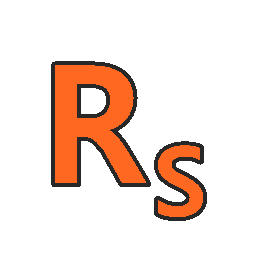Computer technician. In the modern world, computers are widespread and essential devices – both PCs used at home and the ones used in large companies. Usually, companies have their own technicians.
Technicians work on removing malfunctions of computers, as well as installing operating systems and software. They also remove any faults in computer software or hardware. Computer repair technicians can work in small, specialized, repair shops, as well as within small and large companies where a technician is crucial in order to quickly remove any possible malfunction on the company computers.
Throughout this course, our students are first introduced to the computer hardware, i.e. all of its components. They are taught about all the malfunctions that may occur and the way to remove them. We also work on operating systems installation, familiarizing them with the types of systems, and with the computer’s performances that decide which system is appropriate.
Titles saw in this course:
1. How to become a computer technician
2. Communication skills
3. Difference between honesty and integrity
4. Dependability and responsibility in a computer technician
5. Adaptability & versability in a computer technician
6. Sensitivity talking to customers
7. Communication between PC technician and customer
8. Assertive communication
9. Respectful communication
10. Eliciting answer
11. Expectation and follow up
12. Time frame with customers
13. Documentation after finishing PC repair
14. Follow up after the repair
15. Avoiding ESD electroStatic discharge
16. How to mitigate problems with EMI & RFI
17. Personal safety in a computer technician
18. Basic tools for a computer technician
19. Troubleshooting theory
20. What are computers
21. The computing parts
22. 5 stages of the computer
23. Why computer stages matter
24. Connector and components of a computer
25. 5 Common operating system function between them all – CompTIA A+
26. Learning different OS graphical interfaces Windows – Linux – OS X
27. File structures & patch in an operating system Windows Linux OS X
28. File structures and patch in windows Linux OSX
29. 3 tech launch point – PC repair course CompTIA A+
30. How a CPU or microprocessor works
31. What is the difference between storage memory – Ram and HDD
32. Different models of Microprocessors and their history
33. What is a CPU multiplier
34. What is the processor 64 bit
35. What is CPU parallel execution
36. Virtualization support in a CPU
37. What is a superscalar architecture & in order and out of order processing
38. What is hyper-threading in a CPU processor
39. What is an integrated memory controller or IMC
40. What is an integrated graphics processing unit in a CPU
41. What is the security in a CPU windows DEP
42. What is multicore processing in a CPU
43. Selecting & installing CPU – knowing the meaning of each model
44. Installation issue and preventions in a CPU
45. Class about the Cooling system for CPU
46. How to troubleshoot a CPU
47. How memory ram works in your computer
48. Different types of memory RAM
49. How memory SDRAM works
50. Differences between memory RAM, Rambus vs DDR vs SDR
51. Differences between ddr1 ddr2 ddr3 & ddr4 and their features
52. What is single & double-sided ram vs RANK single double & quad
53. What is the latency of memory RAM – CAS, RAS, etc
54. What is parity & ECC ram and how it works
55. What is registered and buffered memory ram
56. How to identify when a PC is running low in RAM?
57. Introduction to Virtual memory in an operating system Certification CompTIA a+
58. What is the ready boost in windows and how it works
59. Getting the right RAM for your computer PC MAC Linux Certification CompTIA A+
60. Mixing ram advice before installation
61. How to install ram guide and advice
62. How to read the SPD chip in a memory RAM
63. How to install memory in a laptop and counting RAM
64. How to Troubleshoot RAM real parity & phantom error CompTIA A+, class
65. What is a BIOS and how does it work in a motherboard
66. What is burn-in in electronics
67. Difference between BIOS & CMOS
68. Motherboard difference between workstation vs desktop
Who Computer technician this course is for:
- All students with interests in Computer technician support IT
- IT engineers
- IT support
- IT Security Specialists

